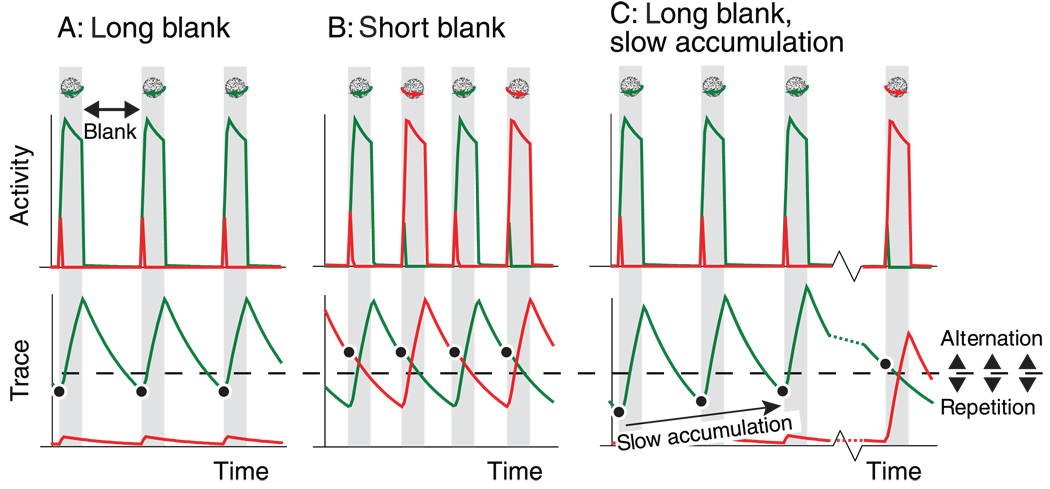Figure 5.
Schematic illustration of the present model account of perception during intermittent viewing. Top panels: activity of the two percepts’ neural representations. Bottom panels: resulting traces that determine perception at the next stimulus appearance. The central idea is that weak traces strengthen a representation and cause repeated dominance, whereas strong traces weaken a representation and cause suppression. (A) Long blank durations allow traces to fall to a level that strengthens a representation (below dashed line) before the next stimulus onset, resulting in stabilization. (B) Brief blank durations do not allow sufficient decay between presentations, leading to perceptual alternations. (C) A trace that is composed of both fast and slow components can steadily grow from one presentation to the next. Then, blank durations that initially allow perceptual stabilization can, after many presentations, lead to an alternation when slow components lift the trace out of its stabilizing range.

